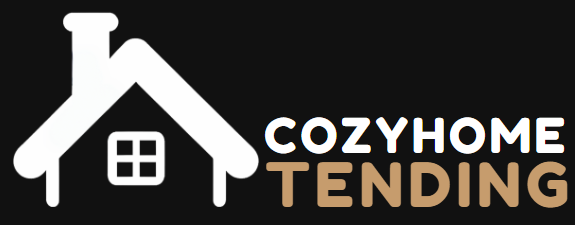Are you interested in reducing your energy bills and contributing to a healthier environment? The fact is that properly insulating your attic can reduce energy use by 10-20%. This article offers an easy-to-follow, step-by-step guide on installing eco-friendly attic insulation.
Let’s turn your home into an efficient green haven!
Key Takeaways
- Properly insulating your attic can reduce energy use by 10 – 20%, leading to lower energy bills and cost savings.
- Eco-friendly attic insulation, made from recycled or natural materials, helps protect the environment by reducing waste and harmful emissions.
- There are different types of eco-friendly attic insulation to choose from, such as batts/rolls (fiberglass, cellulose, recycled denim), loose-fill (cellulose, recycled newspaper, wool), rigid foam board, and spray foam.
- Installing eco-friendly attic insulation involves assessing current insulation, sealing air leaks, protecting heat-producing items, and installing vent chutes for proper airflow and moisture prevention. Measure and lay out the insulation material evenly across the attic floor or between ceiling joists before filling it to the desired level for optimal effectiveness in reducing energy loss.
Why Attic Insulation is Important

Attic insulation plays a crucial role in maintaining a comfortable and energy-efficient home. It’s not just about keeping your living space cozy; it’s also about making significant energy and cost savings while contributing positively to the environment. Efficient attic insulation reduces the need for excessive heating or cooling, leading to lower energy bills and less strain on natural resources.
Energy and cost savings
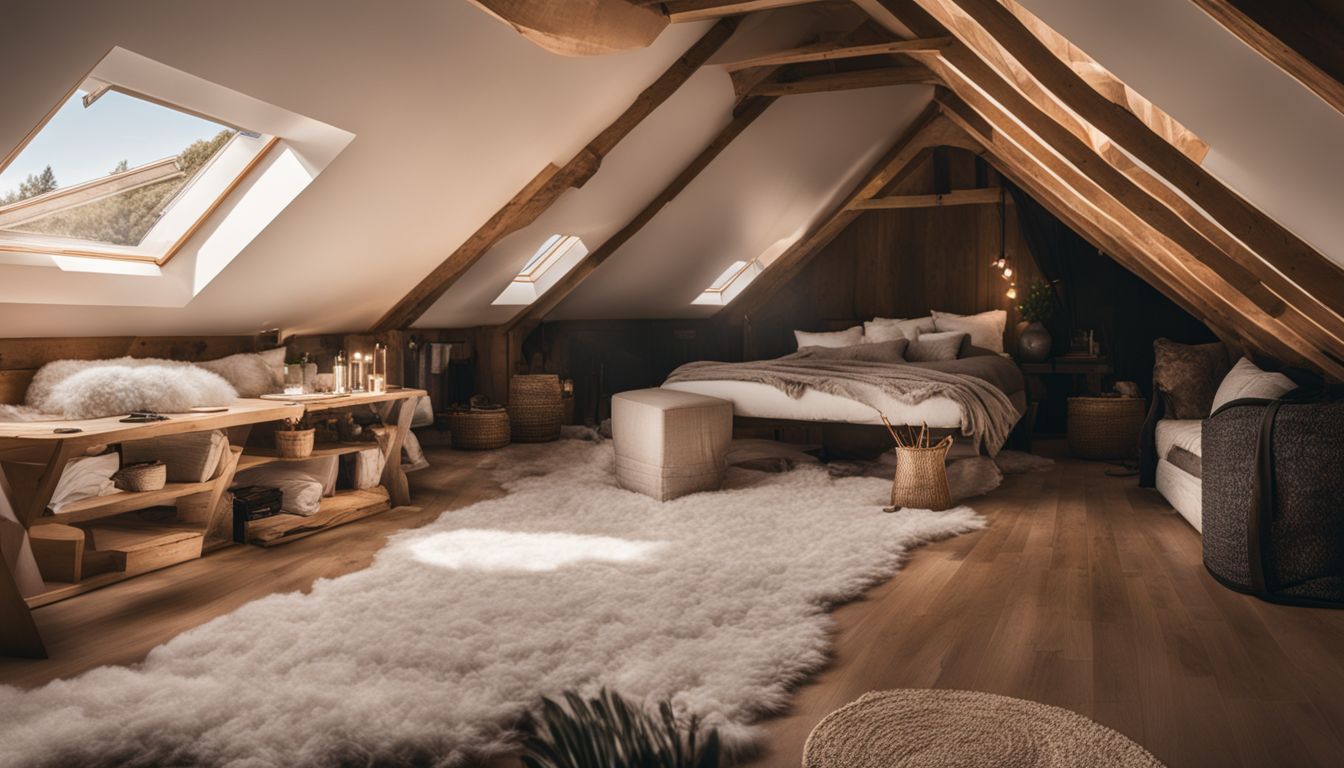
Proper attic insulation is a great way to save money. You can cut your energy bills by up to 15% each year. This means less waste and more cash in your pocket! The cost of insulating an attic ranges between $1 and $7 per square foot.
But this is small compared to the average cost saving of $1,500 you get back from lower energy use each year. Choosing eco-friendly attic insulation makes your home green and saves you money, too!
Environmental benefits
Attic insulation does good things for the Earth. It cuts down on energy use in your home. This leads to a drop in the harmful gases that power plants make when they create energy. Fewer gases mean cleaner air and less climate change.
Eco-friendly attic insulation takes this one step further. These kinds are made of recycled or natural stuff like wool or cotton. Using them means less waste ends up in landfills, and fewer chemicals get used.
All these small steps add up to big wins for our planet!
Comprehensive Eco-Friendly Attic Insulation Guide
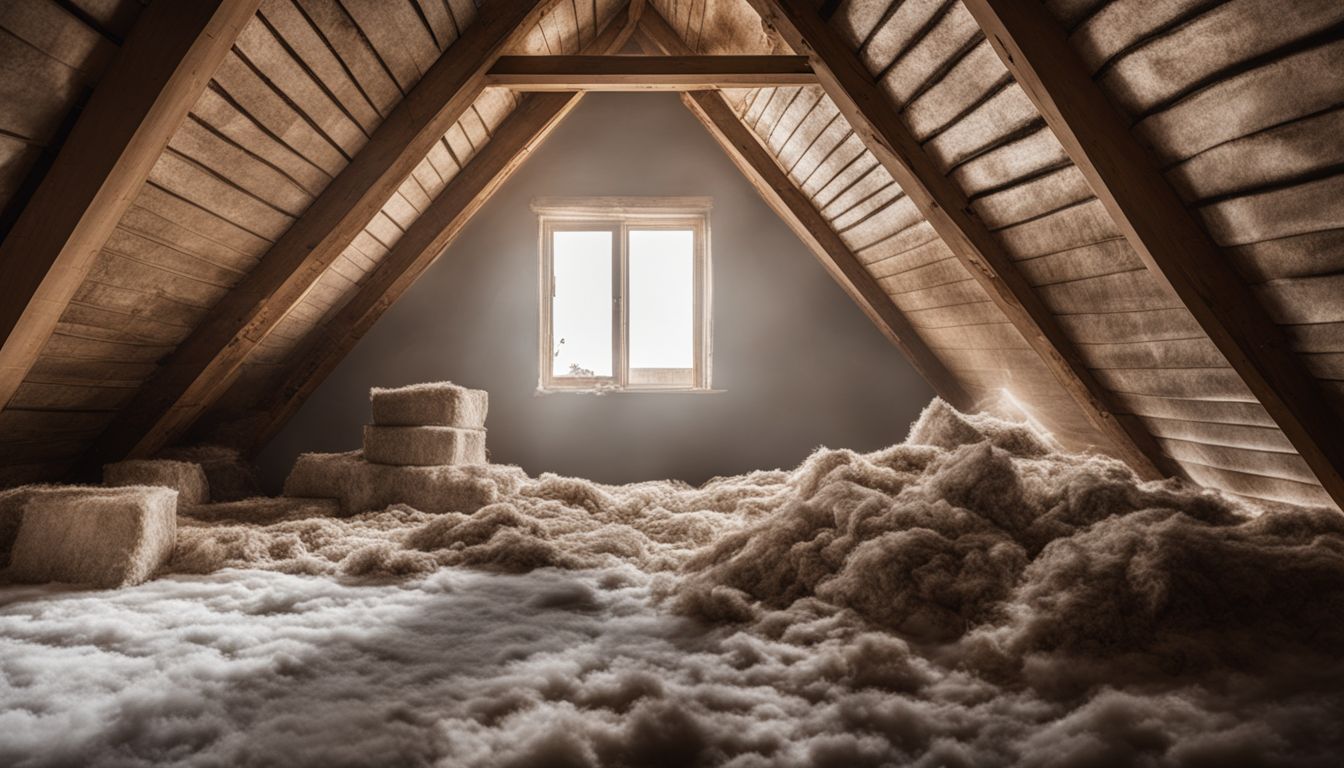
Making your attic eco-friendly is a great step. There are many forms of insulation to choose from, all with different uses. Some types help save energy and cut down costs. Others aim to protect the planet.
First, you need to know what type of insulation works best for your home. The right choice can make a big difference in your house’s comfort level and energy use. Loose-fill insulation is good for attics without any barriers or walls.
It fills up small cracks and holes better than other types.
Cellulose, fiberglass, and rock wool are common materials used in loose-fill insulation. They all work well in reducing energy waste at home but have different benefits, too.
The method of insulating also matters much! Be careful when laying out the insulation material on the floor of your attic, as it must cover every inch properly for optimal results.
Using eco-friendly products not only keeps homes warm during cold months but also helps conserve natural resources by making less waste, which leads to environmental sustainability.
Homeowners who wish to live an environmentally conscious life should think about using green building methods like eco-friendly construction with thermal insulation specifically made from such materials that promote sustainable living while conserving energy within their homes.
Remember to always wear safety gear when installing these materials yourself!
Types of Eco-friendly Attic Insulation
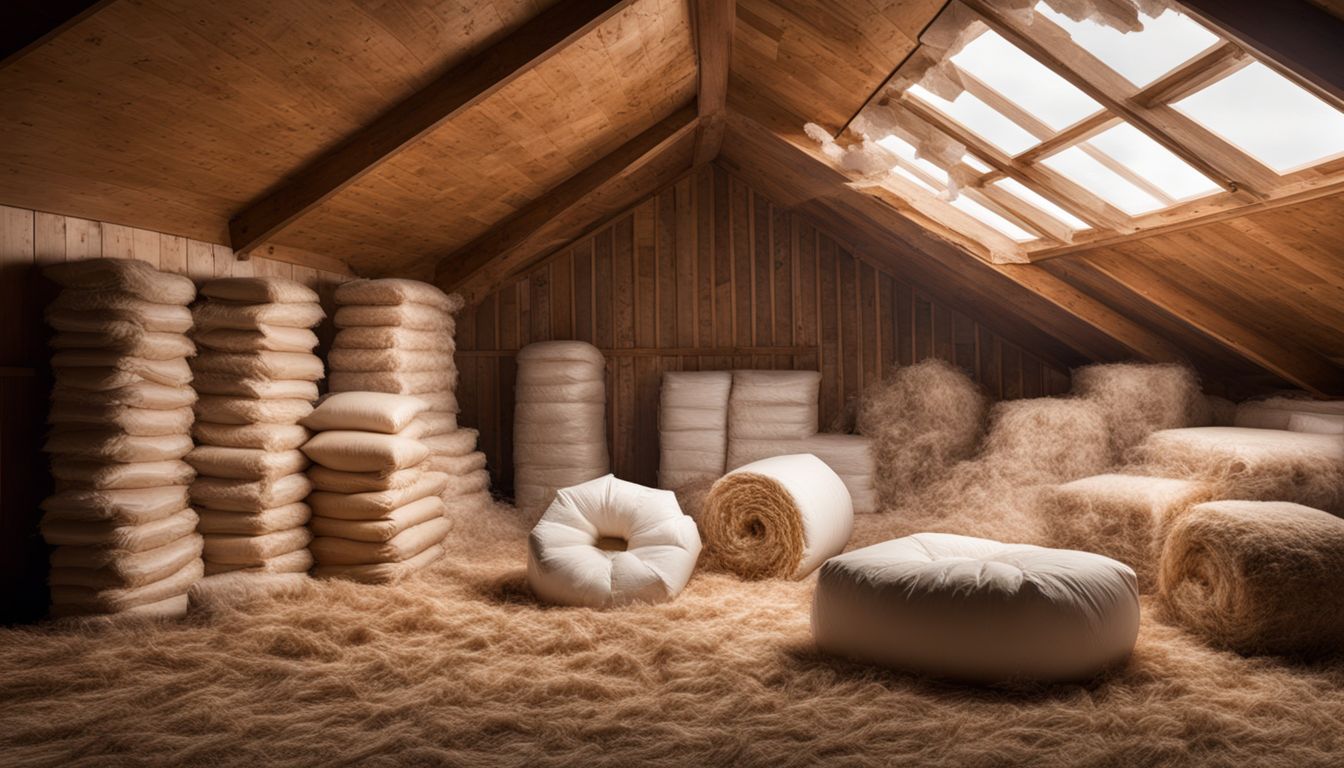
There are several types of eco-friendly attic insulation to choose from, including batts/rolls made from materials like fiberglass, cellulose, and recycled denim, loose-fill options such as cellulose, recycled newspaper, wool, rigid foam board, and spray foam.
Batts/rolls: fiberglass, cellulose, recycled denim
When it comes to eco-friendly attic insulation, there are a few options you can consider. Batts or rolls of insulation made from fiberglass, cellulose, and recycled denim are popular choices.
Fiberglass is commonly used and offers good thermal performance. Cellulose insulation is made from recycled paper products like newsprint, making it environmentally friendly with high recycled content.
Recycled denim insulation has advantages such as superior soundproofing properties and being eco-conscious. These materials are energy-efficient and offer sustainable alternatives for insulating your attic while also providing better thermal properties and resisting mold growth compared to traditional fiberglass insulation.
Loose-fill: cellulose, recycled newspaper, wool
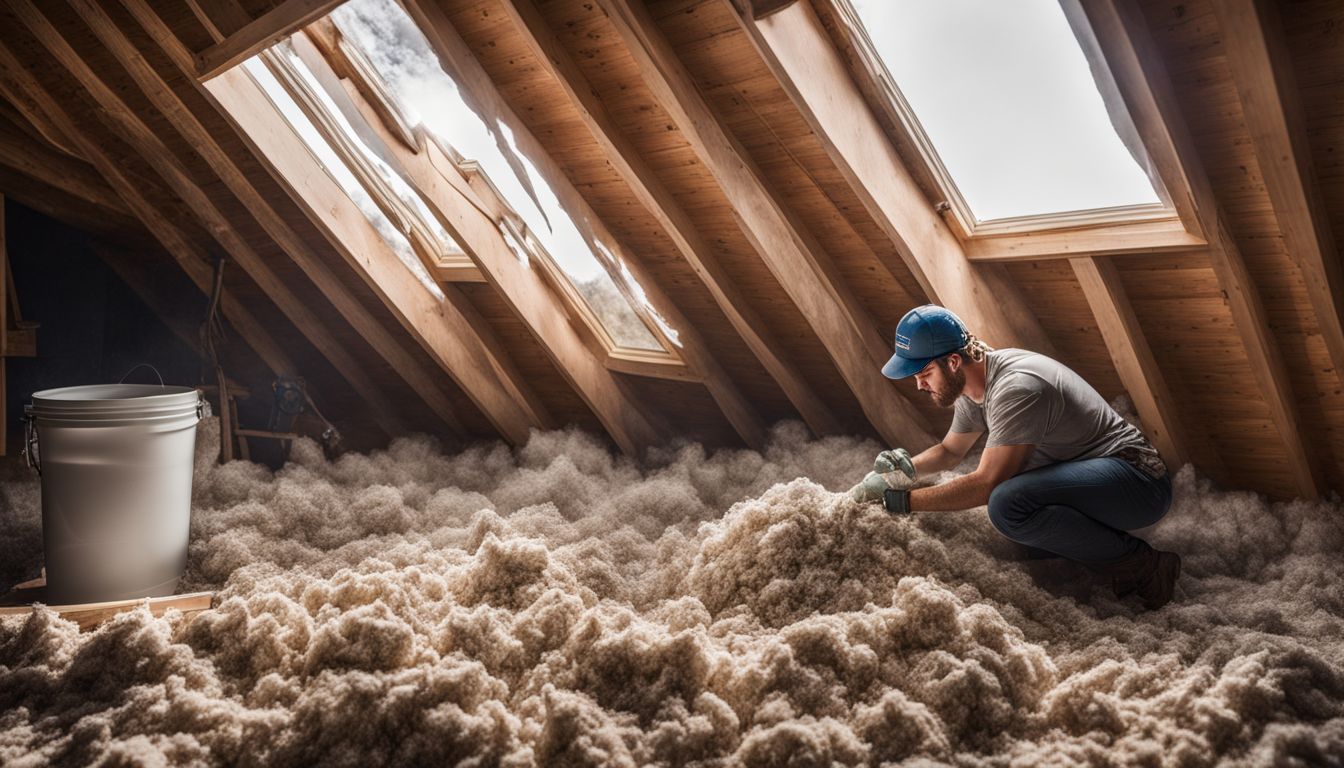
One eco-friendly option for attic insulation is loose-fill insulation made from cellulose, recycled newspaper, or wool. This type of insulation can be used in enclosed cavities like walls or unenclosed spaces such as attics.
Cellulose insulation is made from 75 to 85 percent recycled paper fiber, including recycled newspaper. It’s a sustainable and environmentally friendly choice that helps to reduce energy consumption and lower utility bills.
With loose-fill insulation, you can easily fill the gaps in your attic and improve overall energy efficiency in your home.
In addition to cellulose, there are other types of eco-friendly attic insulation available, including batts/rolls made from materials like fiberglass and recycled denim, rigid foam board, and spray foam.
Rigid foam board
Rigid foam board insulation, such as Expanded Polystyrene (EPS), Extruded Polystyrene (XPS), and Polyisocyanurate, is a type of eco-friendly attic insulation that helps prevent energy loss in your home.
It’s a cost-effective option compared to other types of insulation, like blankets or rolls. Rigid foam boards are made from nontoxic materials and contribute to a sustainable and environmentally friendly approach to building.
They have good thermal resistance properties, which means they can effectively keep your home warm in the winter and cool in the summer. By choosing rigid foam board insulation for your attic, you’re not only saving money on energy bills but also making a positive impact on the environment by reducing carbon emissions.
Spray foam
Spray foam insulation is a popular and sustainable option for attic insulation. It comes in two forms: open-celled and closed-celled. Open-celled foam is considered more environmentally friendly.
Spray foam, like Icynene, can help lower your energy bill by 30 to 50 percent. However, it’s important to note that spray foam insulation is petroleum-based and may have various health risks.
So, when choosing spray foam as your attic insulation, make sure to consider both its energy-saving benefits and potential drawbacks.
Step-by-Step Guide for Installing Eco-friendly Attic Insulation
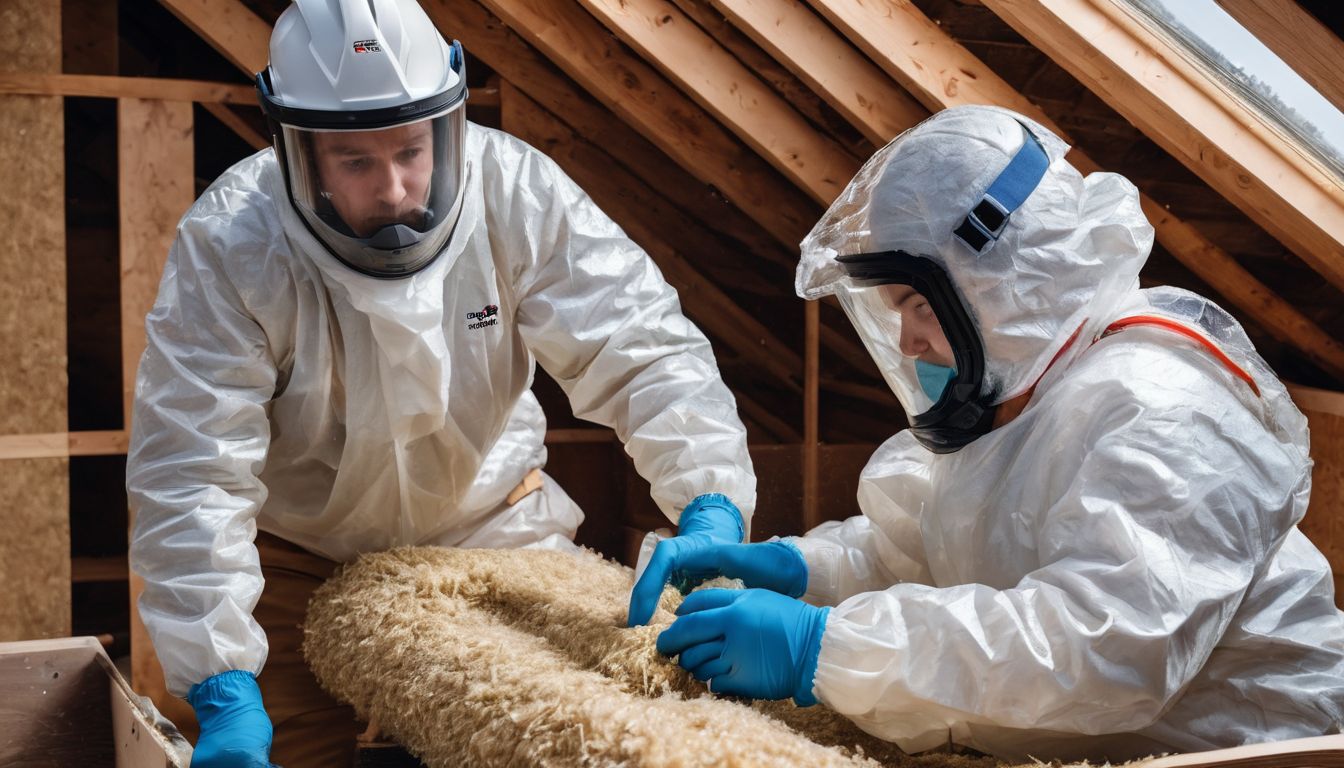
Assess the current insulation in your attic, checking for any gaps or areas that may need additional insulation. Seal any air leaks and intrusions using caulk, weatherstripping, or spray foam to ensure maximum energy efficiency.
Protect heat-producing items such as recessed lights or chimneys with barriers made of sheet metal or wire mesh. Install attic vent chutes to maintain proper airflow and prevent moisture buildup.
Measure and lay out the eco-friendly insulation material of your choice, making sure to cover all areas evenly. Fill the attic to the desired insulation level, following manufacturer guidelines for optimal thermal performance.
Assess current insulation
Before installing eco-friendly attic insulation, it is important to assess the current insulation in your attic. This step will help you determine if there are any existing issues or areas that need improvement.
By evaluating the status of your insulation, you can identify potential problems such as insufficient coverage or damage. It’s recommended to check for signs like drafts, uneven temperatures, and high energy bills, which may indicate poor insulation.
With a thorough assessment, you’ll have a better understanding of your insulation requirements and be able to make informed decisions on how to properly insulate your attic for optimal energy efficiency and comfort in your home.
Seal air leaks and intrusions
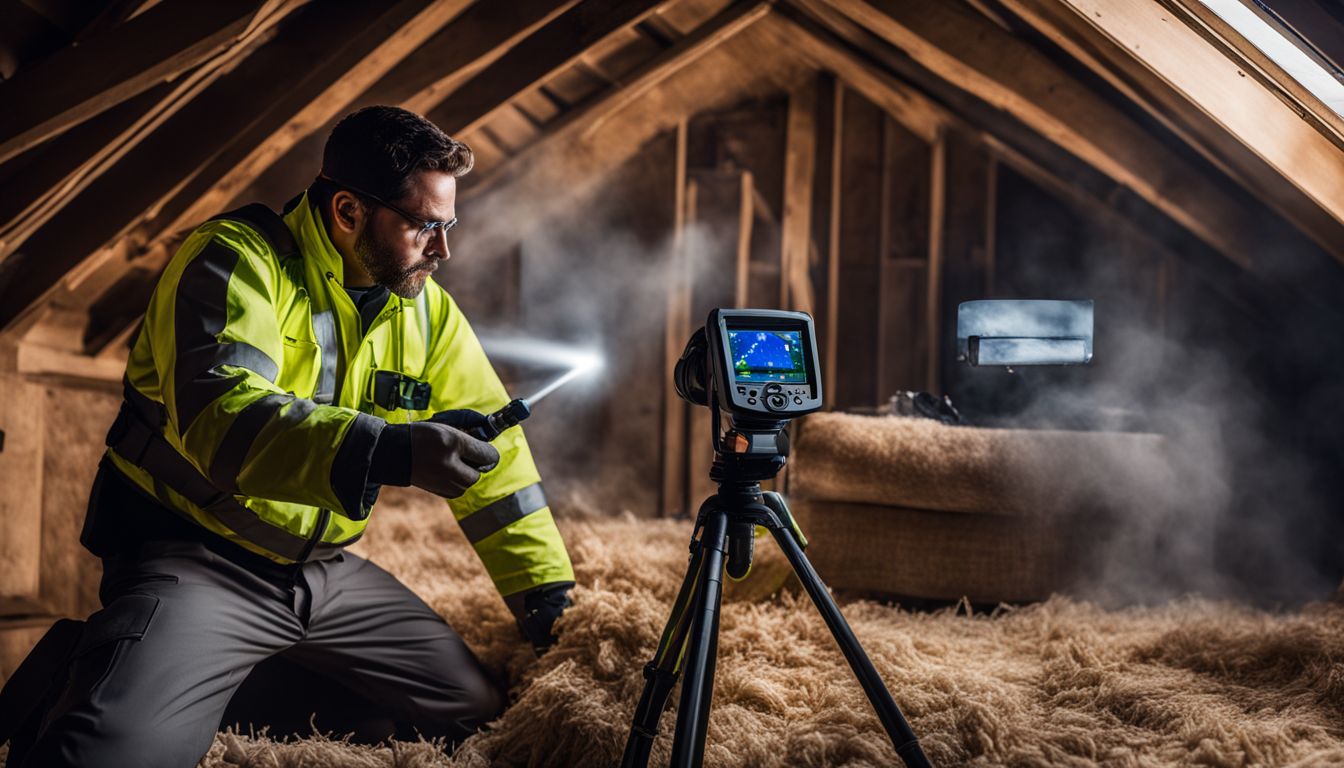
Sealing air leaks and intrusions is an essential step when installing eco-friendly attic insulation. By identifying and sealing gaps, crevices, and unsealed seams in your home, you can prevent air leakage and make your insulation more effective.
This process can help improve energy efficiency, reduce heating and cooling costs, and create a more comfortable living environment. To ensure a successful sealing job, it’s recommended to consult with contractors who offer air-sealing services before starting the insulation installation.
They can provide guidance on locating potential leaks and suggest the best methods for sealing them. Additionally, by properly sealing air leaks in your attic, you can contribute to energy conservation and promote green building practices.
Protect heat-producing items
During the installation of eco-friendly attic insulation, it is important to protect heat-producing items in your attic. This includes lighting fixtures and appliances that generate heat.
By safeguarding these items, you can prevent potential hazards and ensure proper insulation throughout your attic. This step is crucial to creating a green and healthy home environment.
Make sure to take the necessary precautions by covering or moving any heat-producing items before installing the insulation. By doing so, you can contribute to energy savings and reduce your carbon footprint while maintaining a safe attic space for you and your family.
Install attic vent chutes
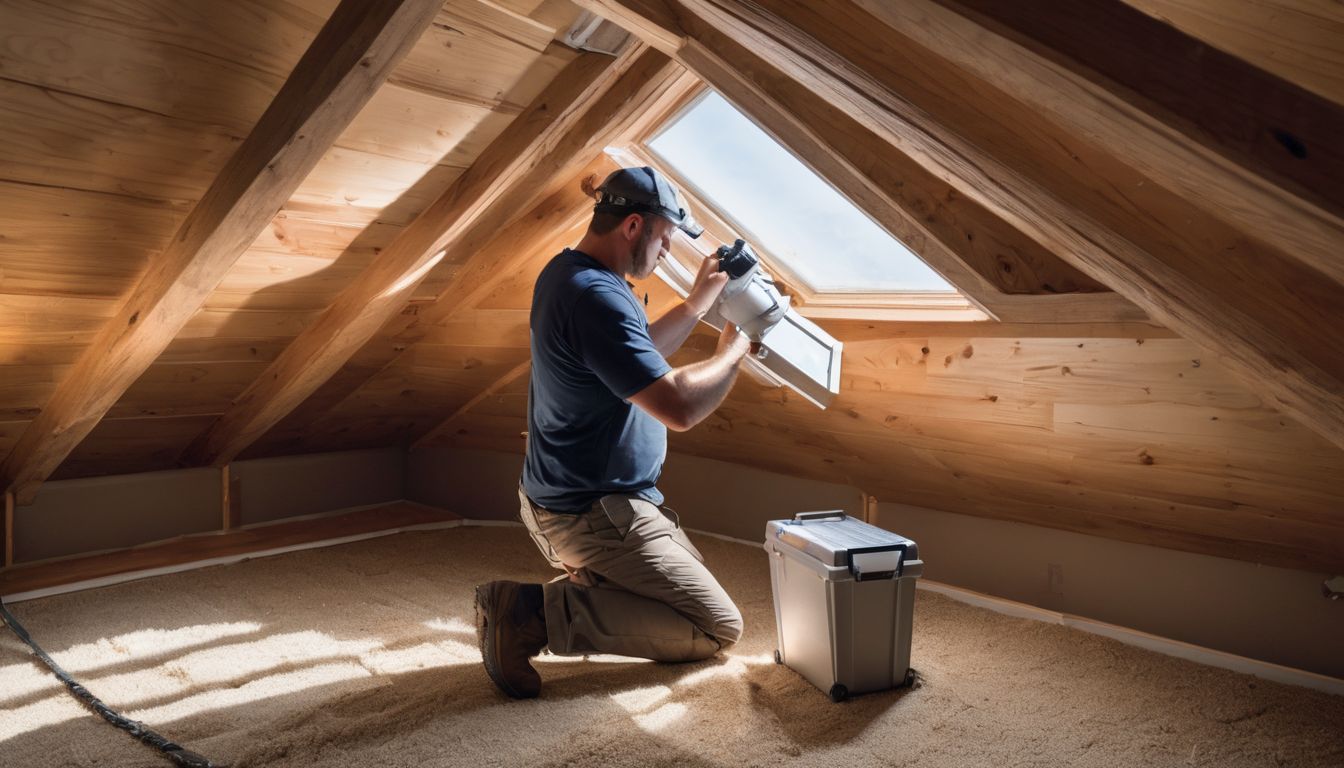
To properly insulate your attic, it’s important to install attic vent chutes, also known as insulation baffles. These chutes help cover the entire attic floor with insulation all the way out to the eaves.
Typically made from materials like OSB (oriented strand board), these vent chutes are often more effective than commercially available baffles. By installing rafter vents or insulation baffles, you ensure complete coverage of the attic floor with insulation.
This is crucial for proper attic ventilation, which involves having an airtight ceiling, sufficient airflow, plenty of soffit vents, and deep insulation at the attic perimeter.
Measure and lay out insulation
To properly install eco-friendly attic insulation, it’s important to measure and lay out the insulation correctly. First, measure the area where you plan to install the insulation to determine how much you’ll need.
This will ensure that you have enough insulation to provide adequate coverage in your attic.
Once you have measured the area, lay out the insulation evenly across the attic floor or between the ceiling joists. Make sure to leave space around heat-producing items like recessed lighting fixtures and chimneys, as these areas should be kept clear of insulation for safety reasons.
Fill to desired insulation level
To ensure optimal energy efficiency and cost savings, it is crucial to fill your attic insulation to the desired level. The amount of insulation needed depends on factors like climate and insulation type.
By filling your insulation properly, you can prevent heat loss or gain, reducing the need for excessive heating or cooling. This helps lower your energy bills and makes your home more environmentally friendly.
So, take the time to measure and lay out the insulation accurately to achieve the recommended level for maximum effectiveness in insulating your attic space.
Common DIY Mistakes to Avoid in Attic Insulation
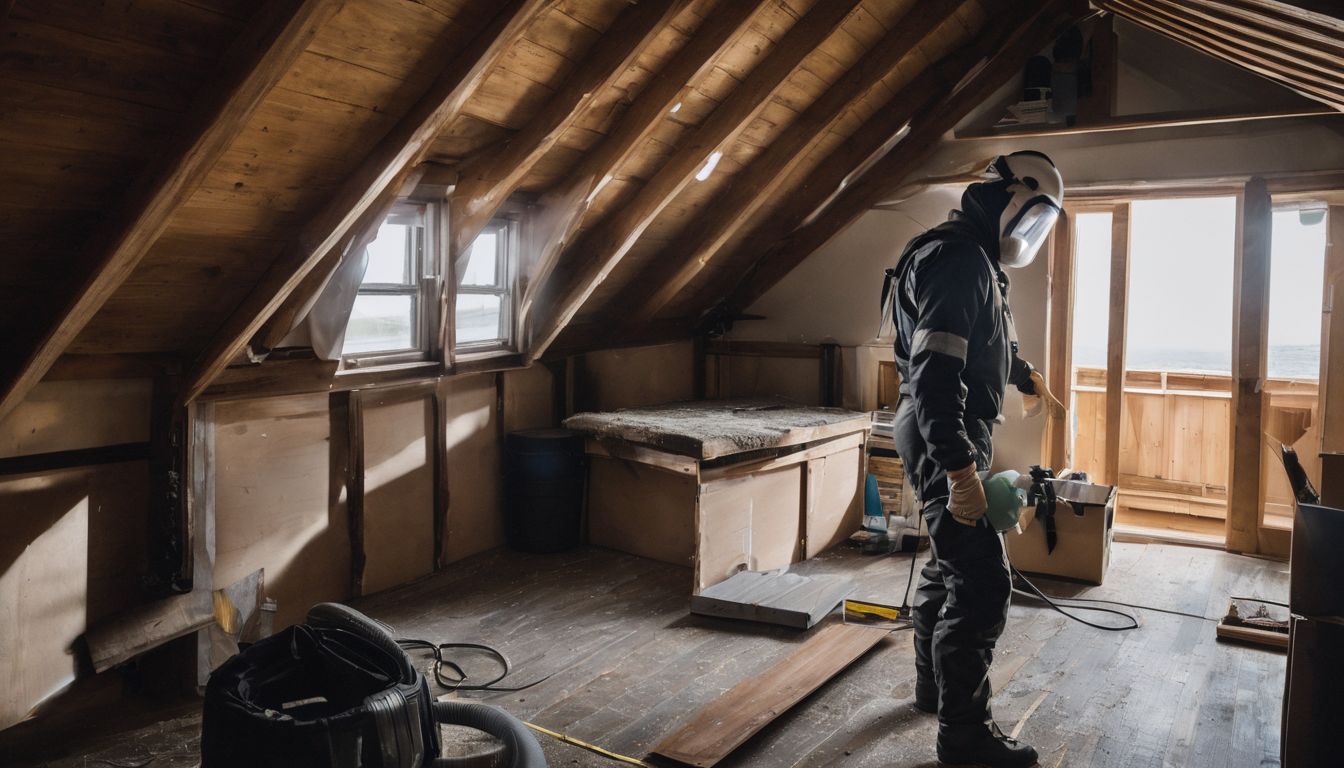
When installing attic insulation, it is important to avoid common DIY mistakes that can impact its effectiveness. Sealing air leaks, using proper protective gear, and filling to the desired level are crucial steps in ensuring a successful insulation project.
Not sealing air leaks
Not sealing air leaks in your attic can lead to higher energy bills. When there are gaps or cracks in your attic, warm or cool air can escape and affect the temperature inside your home.
This means that your heating or cooling system will have to work harder, resulting in increased energy consumption and costs. By sealing these leaks before adding insulation, you can prevent drafts, improve indoor comfort, and save money on your energy bills.
Don’t forget to locate and seal basement air leaks as well to prevent the “chimney effect” and ensure better insulation effectiveness throughout your home.
Not using proper protective gear
One common mistake that homeowners make when insulating their attics is neglecting to wear proper protective gear. Many people underestimate the importance of safety equipment during this process, but it can have serious consequences.
Failing to use appropriate safety gear can lead to potential health risks and accidents. Insulation materials, such as fiberglass or cellulose, can irritate the skin, eyes, and lungs if not handled with care.
Wearing gloves, goggles, and a mask is crucial to protect yourself from these harmful substances. Additionally, using knee pads and a hard hat can prevent injuries while working in cramped spaces or under low ceilings.
Not filling to desired level
One common mistake homeowners make when installing attic insulation is not filling it to the desired level. Attics typically require at least 12 inches of insulation to achieve the recommended R-value for energy efficiency.
If the insulation depth is insufficient, it can result in heat loss and a less comfortable home. It’s important to ensure that your attic has adequate insulation coverage to prevent energy waste and reduce utility bills.
Don’t forget to clear the attic floor of any stored items before installing insulation to avoid leaving any areas uncovered. Consider using blown-in cellulose insulation as a suitable option for DIY attic projects.
When and Why to Replace Attic Insulation
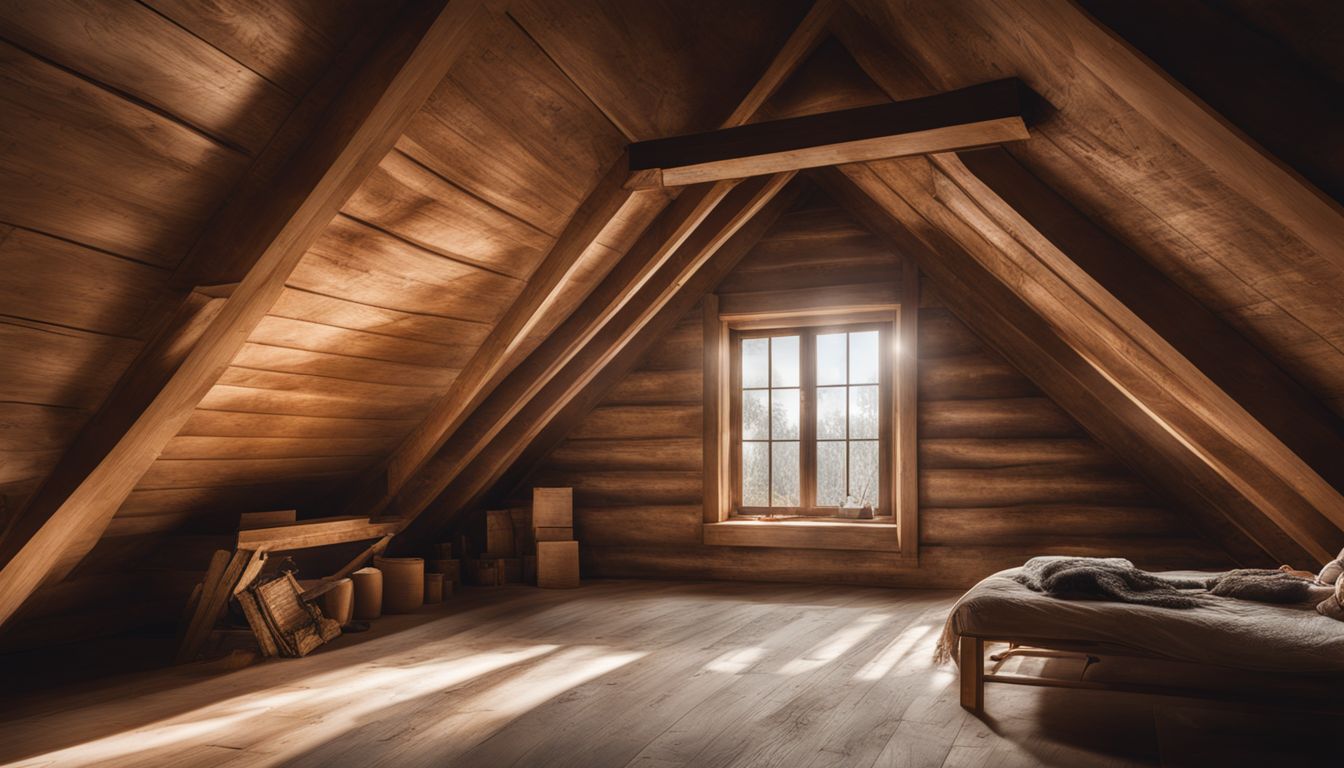
Knowing when and why to replace your attic insulation is crucial for maintaining energy efficiency and a comfortable home. Don’t miss out on this important information – read on to learn more!
Signs of damaged or insufficient insulation
Damaged or insufficient insulation in your attic can lead to a range of problems. One sign is the presence of mold growth, which indicates a need for replacement and remediation. Degradation, moisture buildup, and animal infestation are also signs that your insulation may need replacing.
If you’ve noticed high energy bills or air leaks in your home, it could be due to inadequate insulation. Insufficient insulation can also result in moisture buildup, promoting mold growth and causing musty odors.
Poorly insulated attics may fail to provide a sound barrier as well, leading to unexplained noises in your home. Keep an eye out for excessive dust, discolored walls, and gaps in insulation – these are all signs that it’s time to consider insulating your attic properly.
Recommended replacement timelines for different insulation types
Insulation offers a range of advantages to homeowners, including energy efficiency and cost savings. However, it’s important to note that these benefits can diminish over time as insulation materials degrade. Here’s a handy table highlighting the recommended replacement timelines for different types of attic insulation:
| Type of Insulation | Expected Lifespan |
|---|---|
| Cellulose | Up to 30 years |
| Fiberglass Batts | 80 to 100 years |
| Recycled Denim | Varies, inspect regularly |
| Loose-fill (e.g., cellulose, recycled newspaper, wool) | 80 to 100 years, if undamaged |
| Rigid Foam Board | Varies, inspect regularly |
| Spray Foam | Varies, inspect regularly |
Keep in mind that these are rough estimates, and actual lifespans can vary. Factors such as climate, installation quality, and necessary maintenance can influence the durability of your insulation. Wet insulation, for example, might need replacement depending on the type and extent of the damage. Always assess your home’s specific needs and conditions before deciding on the best insulation type and replacement schedule.
Conclusion
In conclusion, eco-friendly attic insulation is a smart choice for homeowners who want to save energy and reduce their impact on the environment. By following a step-by-step plan and using sustainable materials, you can easily install insulation in your attic and enjoy the benefits of lower energy bills and a more comfortable home.
Don’t forget to avoid common DIY mistakes like not sealing air leaks or wearing proper protective gear. With eco-friendly attic insulation, you’ll be making a positive difference for both your wallet and the planet.
Frequently Asked Questions
1. Why is eco-friendly attic insulation important?
Eco-friendly attic insulation helps reduce energy consumption, lower utility bills, and minimize the environmental impact by using sustainable materials.
2. What are some eco-friendly materials for attic insulation?
Some eco-friendly materials for attic insulation include recycled cellulose, wool, cotton, and natural fibers like hemp or flax.
3. Can I install eco-friendly attic insulation myself?
Yes, you can install eco-friendly attic insulation yourself by following a step-by-step plan and ensuring proper safety measures are taken.
4. How do I prepare my attic before installing eco-friendly insulation?
To prepare your attic before installing eco-friendly insulation, clean up any debris or dust, seal air leaks with caulking or weatherstripping, and ensure proper ventilation.
5. Will adding more insulation in my attic really make a difference?
Yes, adding more insulation in your attic can significantly improve energy efficiency by reducing heat loss or gain through the roof and preventing drafts.
